

 TERRY SMITH looks at the success story that is the Boeing 787 Dreamliner.
TERRY SMITH looks at the success story that is the Boeing 787 Dreamliner.
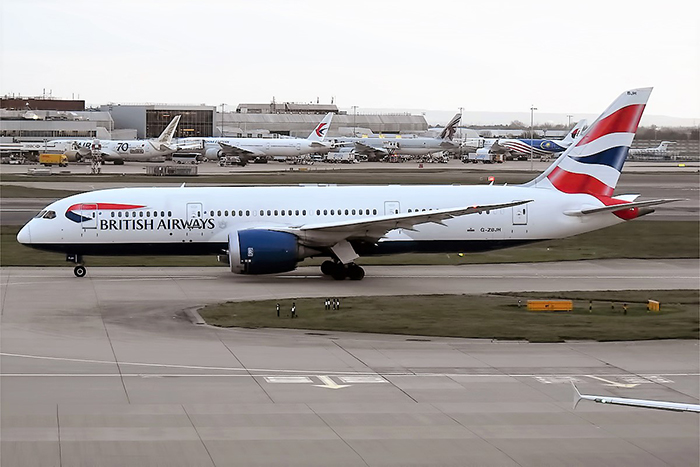
During the 2000 Farnborough Air show, Airbus Industries were pushing for even larger aircraft to take to our skies and for the world’s airlines to purchase and, while indeed Emirates did place an order for 7 of the A380 behemoths at the show, Boeing had different ideas and was touting a smaller, but more efficient plane for the future of air travel. This plane was to become the 787 Dreamliner.
What Boeing eventually came up with was one of the most advanced airliners ever produced and to date the world’s airlines are operating almost a thousand of them, by March of this year, which is a phenomenal number considering it has only been in service for ten years. In total, 72 airlines have ordered this aircraft while, as of today, another 500 planes are outstanding to customer orders. Things got underway during the early part of this century and the model designated the 787 was formally launched in April 2004 with an initial order for 50 aircraft from ANA (All Nippon Airways of Japan) who are now the largest operator of this type. The first prototype flew in 2009 and entered service with ANA in 2011, but by now many other airlines including the likes of BA had ordered this state-of-the-art aeroplane.
So, what makes the 787 so desirable? Well with running costs always at the forefront of any operators mind the 787 (or Dreamliner as it has become known) is around 30% more efficient than similar mid-sized aircraft, like Boeing's own 767. The fuselage has been made entirely out of carbon fibre, which reduces weight but also increases the strength - so much so that the passenger cabin pressure can be maintained at much lower levels, allowing more oxygen and reduced fatigue to the travellers. The added fuselage strength also allows passenger windows of around 270 x 470mm, making them by far the largest cabin windows on any airliner. The windows are also placed higher up, so that window-gazing passengers like me can look out with out stooping to see the view. Another neat touch is that there are no plastic blinds, instead the amount of light a passenger wants can be controlled by Electchromism smart glass by either the passenger or the flight crew when taking off and landing. The plane features cutting edge electronic control systems and the pilots benefit from a HUD (heads up display), which projects basic flight information on to the front screens, much-like a modern-day jet fighter. The plane is also fitted with the latest high efficiently engines, built by either General Electric or Rolls Royce, giving it a cruising speed of Mach 0.85 which is over 650 mph.
While airliners seem to differ little in overall shape today compared to planes from years gone by, the design of the Dreamliner sets it apart. From the ground the shape of the wings makes it easily recognisable. The 787 has much narrower curved, swept-back wings which end almost in a pointed tip which reminds me of a swallow, and when on the ground the nose of the aircraft seems to droop down like a French Bulldog! The upshot of all of the design features is a plane that, due to its efficiency, can now fly further and increase airlines route availability. Operators like BA who own 32 Dreamliners are now using the plane to fly to longer haul places that they could not do economically before, and even companies like TUi have them on hi-volume shorter haul routes like the Balearics, as I found out in 2019.
The 787 is considered a wide-bodied plane with operators having a choice of rows of either eight or nine seats with two aisles in economy class. The original plane was designated the 787-8 and at 56.7m long could take 242 passengers in a 2-class configuration. In 2014 the 787-9 went into service with a 6.7m stretch to the fuselage allowing up to 2 class 280 seats, while the 787-10 was stretched even further allowing up to 310 passengers in 2 classes, went in service in 2018. In single class layouts, like those offered by holiday operators, the maximum amount of seating can be increased massively with the latest 787-10 having a capacity to take up to 440 passengers.
So, what of the future? Well with so many orders coming in for the 787-10, Boeing’s future looks rosy, however they are also planning the possibility of a cargo version, and the US Government is considering using the aircraft as the basis of the next Air Force One, used for presidential duties.
Herpa have a wide range of 787 Dreamliners to add to your collecton, across a variety of scales too.
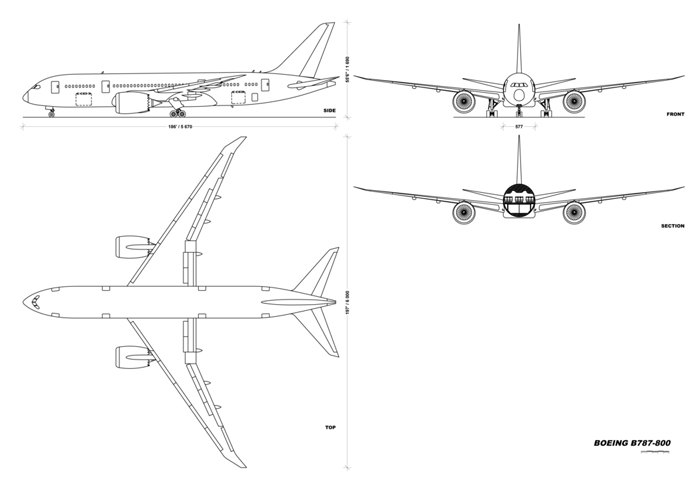
Original Boeing drawings of what was to become marketed as the Dreamliner, a huge success story for the Seattle based company.
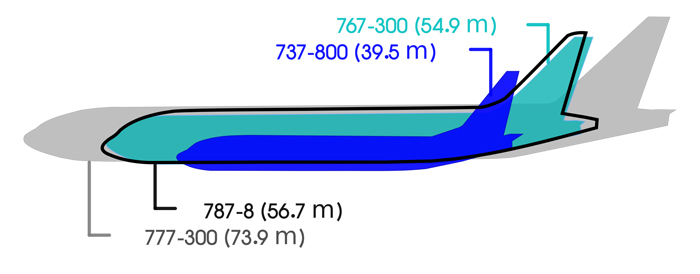
All in the family! While mirroring the size of the 767, the Dreamliner (outlined in black) has since grown in length since this image was made.
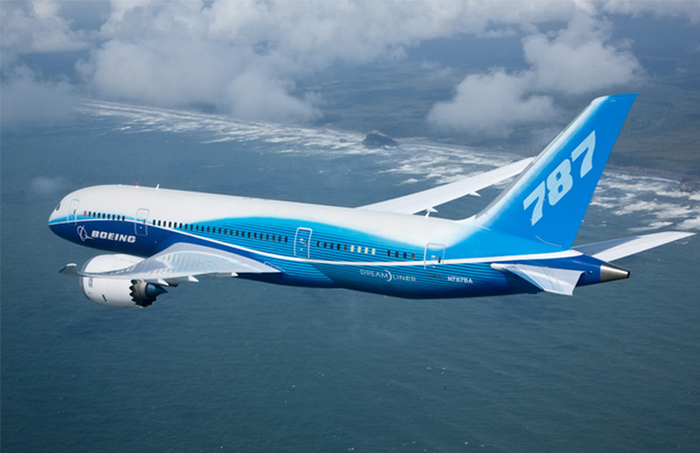
The Prototype being flown along the Washington State coastline. Note how thinly the wingtips taper down to, a feature that sets the Dreamliner apart.
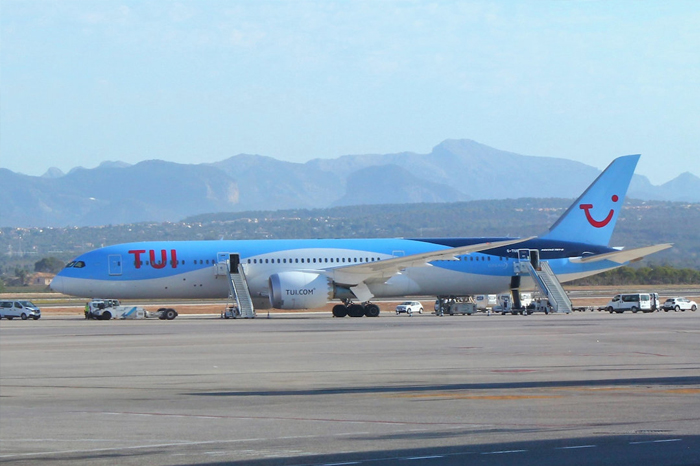
The UK run part of Tui operate 14 Dreamliner’s and I was surprised, and pleased, to fly on this one from Mallorca in August 2019.

While not quite panoramic, the view of Palma from my seat was almost uninterrupted by the larger than normal windows.